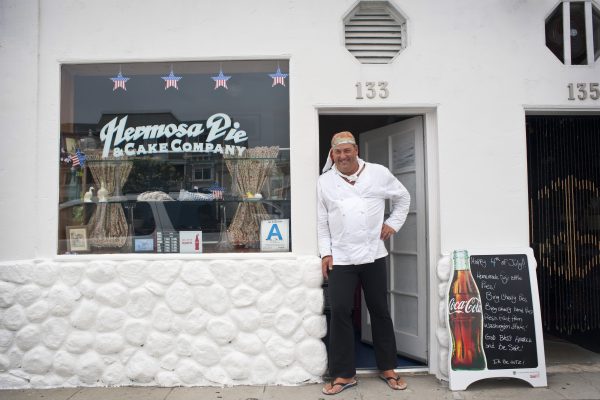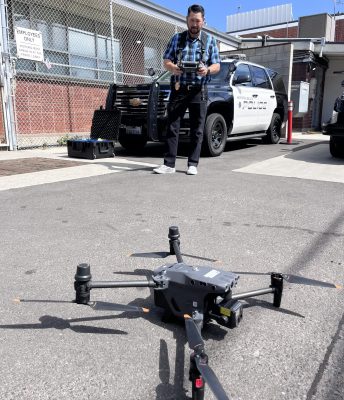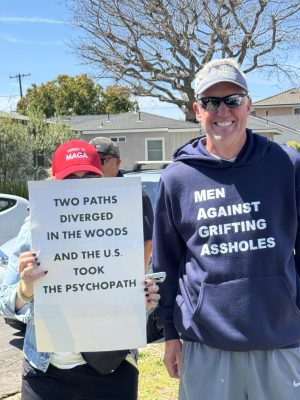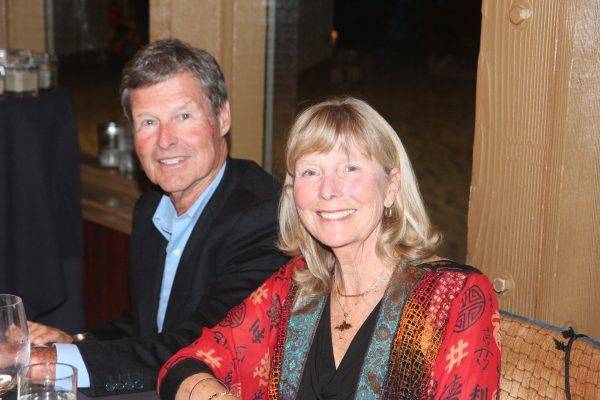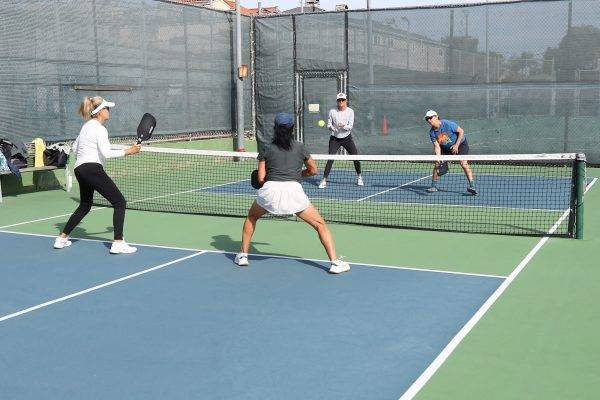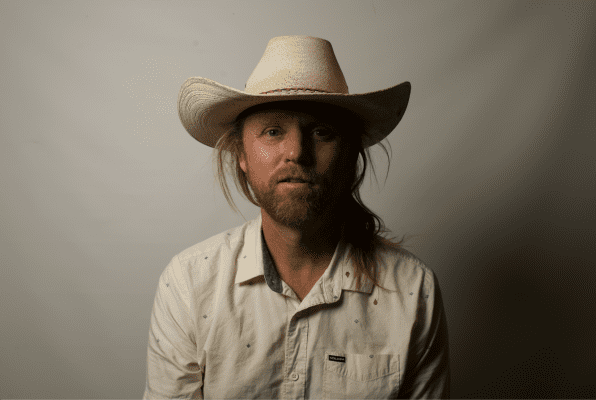Against all odds, Holly McPeak would not let go of her Olympic dream
by Mark McDermott
Holly McPeak never expected things to come easy. As a normal sized human playing at the highest levels of volleyball, a sport of giants, she had little choice. But the challenges she faced along the way were beyond difficult, into the realm of Olympian. Which is to refer not just to the Olympic games, but to the highest mountain of Greek mythology, the one seemingly out of mortal reach.
McPeak first made her mark at Mira Costa High School, a 5-foot-7 force of nature. She was part of two CIF championship teams, including a 29-0 season her junior year. MCHS Coach DaeLea Aldrich saw an unstoppable quality in her star player.
“She’s a great athlete who will do anything you ask, and she’ll do it twice as hard,” Aldrich said. “She’s the girl who does the extra mile and the extra lifting in the off season.”
McPeak had grown up watching and then playing against and with beach volleyball pro players at the Marine Street courts. But she learned who she was as a player under Aldrich.
“I remember the first day of practice, we were all doing sprints, varsity, JV, freshman, and everyone together, and girls were throwing up in the trash can,” she recalled in her Sandcast interview. “I was like, ‘Oh my god, they are throwing up.’ I was terrified. You just did not want to let her down. There was no let up…You couldn’t be a minute late, you couldn’t miss a game, you couldn’t miss a practice, they didn’t care if you were sick. I appreciate her for the lessons she taught in just the structured environment, because I learned early on that that was what I thrived in.”
Despite her relatively small stature, McPeak was heavily recruited by some of the biggest college volleyball programs. Volleyball Monthly called her “the most coveted setter in the country.” She initially committed to UCLA, but changed her mind when the Bruins signed a 6-foot-1 setter from Chicago. She decided instead to go to UC Berkeley, which didn’t have as elite a program as UCLA, but offered another kind of challenge.
“I just wanted a fair shot,” McPeak told the Sandcast podcast last year. “So I pivoted. I took a different challenge to go to Berkeley and help build that program.”
She was the Pac-10 Freshman of the Year in 1987 but after the season the coach who’d recruited her departed for another school. Mystifyingly, the new coach was not a fan of McPeak’s gritty playing style. “I wanted to win, I wanted to work hard, and he was completely unprofessional,” McPeak said. They butted heads for two years until she was kicked off the team. The school allowed her to keep her scholarship, due to the unusual circumstances, but McPeak thought her college career was over. She thought about transferring to UCLA, but inter-conference transfers had to wait two years until they were eligible to play again.
But McPeak being McPeak, she went the extra mile. She challenged the Pac-10’s existing rules, and won. She petitioned, and received letters of support from representatives of all 10 of the conference’s schools.
“I went to the PAC 12, and I said, ‘Look, here’s my situation,’ and I had a laundry list of things on my side so I could petition for immediate eligibility,” she told Sandcast. “All summer long, they sat on it…So I gave everything up, moved home, and I walked on at UCLA. I had no scholarship. Day one, they said, ‘Okay, you’re clear. You can play for UCLA.’ Day two, I got a full ride. It was amazing…Some middle blocker who was 6-foot-5 quit on day two, and that’s how I got a scholarship. So, you know, it just unfolded perfectly. I’m a firm believer in things happening for a reason. I was meant to go to Cal, meant to learn those lessons, meant to suffer a little bit and then have the best season of my life indoors at UCLA.”
The team went 36-1 and won a national championship. McPeak earned all-conference honors and set a single season record of 2,192 assists as well as an astonishing single match record of 97 assists.
“It was fantastic to finally end on that beautiful note where all the players bought in, and all of them did the hard work, and we all worked to make one another better,” McPeak said.
She could have attempted to join the USA Volleyball indoor team after graduating, but she was done trying to prove that her height was any kind of limitation. She was ready to go back to the beach.
“It was always like, ‘Oh, if you’re not a tall setter, you can just forget it at the national team,” McPeak said. “I loved it, but I was more drawn to the beach because that was my passion and nobody could set limitations on me because I was five-foot-6 and 3/4, right? It did not matter. I don’t care if I’m facing the best indoor player in the world on the other side of the net – on the beach, they’re going down. That’s how I felt. I was just so confident. I was just a little gritty beach kid, and I was fearless, and people didn’t want to play me.”
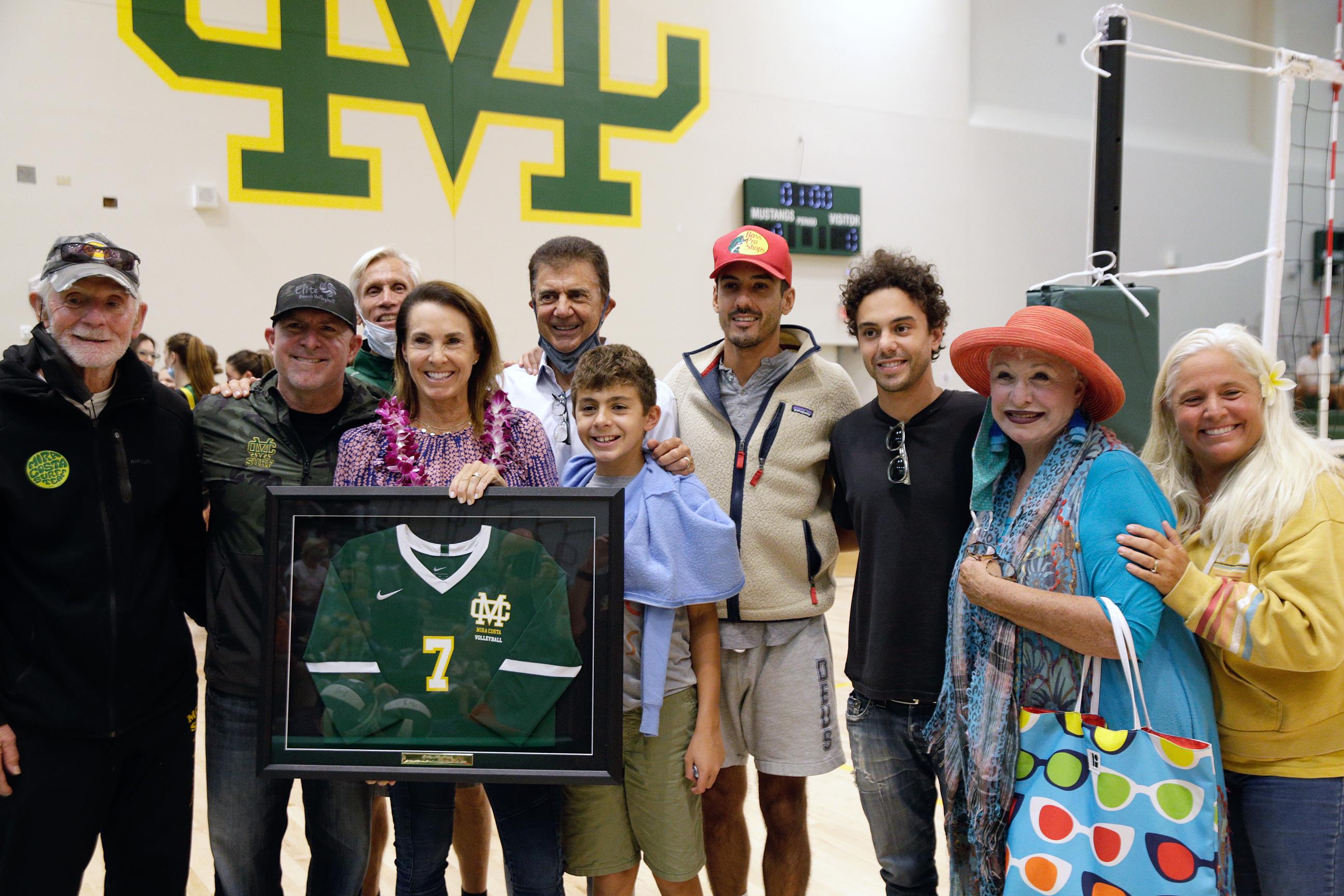
“One of the coolest things about beach volleyball back then…There was not anybody supporting you in terms of USA Volleyball or anything. You bought some balls and went down the beach to practice and showed up at the tournament. My value proposition was that I’m going to outwork anybody. I’m definitely not as physically blessed and talented as them, but I will outwork anybody. And that was what I did, and that’s how I got where I got.”
McPeak had a head start when she joined the professional ranks. She’d played in her first pro tournament at 18, and even during her indoor career was never far from the beach. In 1991, she was named the WPVA’s Rookie of the Year. She originally thought beach volleyball would be more of a side gig, and that she would attend law school. But In 1993, she won 11 tournaments, 8 with Cammy Ciarelli, and with multiple other partners. By the mid-’90s she was surprising even herself with the income her career was generating. She would eventually win 73 tournaments, with a career earnings of over $1.4 million.
But she harbored a hope for something no amount of money could buy. She wanted an Olympic medal. In 1995, beach volleyball was approved as an Olympic sport. She teamed with another former college star, Nancy Reno, who’d played at Stanford, and made her first Olympic run.
I was just at the beginning of my rise to the top,” McPeak told Sandcast. “I was like, ‘Game on. Let’s go.” You know, I had won a bunch with Cammie Ciarelli, who I loved, but one of my biggest competitors was Nancy Reno out of Stanford. She was this physical athlete, completely different, personality wise, than me. But once we started playing together in ‘95 it was like we were the best team in the world. Immediately we dominated.”
But in January 1996, Reno tore her rotator cuff. They were the best team in the world and had already qualified for the Olympics in Atlanta, but for the next six months, they were not able to train together. McPeak refused to drop Reno, and instead trained with other people as her partner recuperated. Reno was healthy enough to play by July, when the Olympics took place, but things were not the same.
“You lose your rhythm as a team. You don’t have that edge,” McPeak said. “Nobody would have beat us. We were unbeatable. So I was just trying to survive that…I still dreamed like, ‘Oh, this is going to be that miracle story that you read about. You’re going to come together. Her shoulders taped on, but we’re still going to win.’ But it wasn’t like that. Our chemistry, everything, was off.”
They finished 5th. McPeak put it behind her, continuing her dominant run on the WPVA, then the AVP. As the 2000 Sydney Olympics approached, Reno approached her, and McPeak agreed to make another run together. But in early 1999, Reno unceremoniously dropped her.
“So I basically lost that first year of the Olympic qualifying process,” McPeak said. “I didn’t have a steady partner. So I’m like, What can I do to get back in the race? And I brainstormed, and I thought, ‘Gosh, just a stab in the dark, but there’s this young player at Long Beach State, and her name’s Misty May, and I heard she’s good.”
They were short on time but they gunned for it, and with four tournaments left in the qualifying process were right in the running when May tore an abdominal muscle while playing in Berlin. In May, McPeak had found the perfect partner, a physically gifted and wildly explosive offensive player, but also someone who matched her own grit. May continued to play, in severe pain, and it came down to the final tournament, in China. May was so incapacitated by her injury that she served underhanded, then ran to the net. They were down 9-13 in the final set, in a game to 15, and somehow came back to win, and qualify for the Olympics.
“It was the proudest moment of my career, because of what we were able to do – I mean, what she was able to do,” McPeak said. “She was miraculous. I mean, Misty May-Trainor is a baller.”
They flew together to a specialist in Canada for special treatment for May, who had to stop training until just before the Olympics as she attempted to recover. Once again, McPeak refused to replace May.
“Misty May at 70 percent is pretty darn good,” McPeak told the Easy Reader at the time. “I’m going to have to pick up my game even more. I’m coming to win. That’s the type of athlete I am…We are capable of winning a gold medal. These are goals we set for ourselves a long time ago.”
The same thing occurred as in ’96. They didn’t regain their rhythm, and finished 5th at the Olympics.
“Eight years of my life,” McPeak said on the podcast, referring to the two Olympic disappointments. “We did the best we could, but it was heartbreaking.”
Only a week later, at a special tournament featuring all the same teams, they finished first. It was all about timing. They made plans to regroup for Brazil in 2004, but then May dropped McPeak for “this tall skinny person from Stanford” named Kerry Walsh. (May and Walsh went on to win three gold medals.)
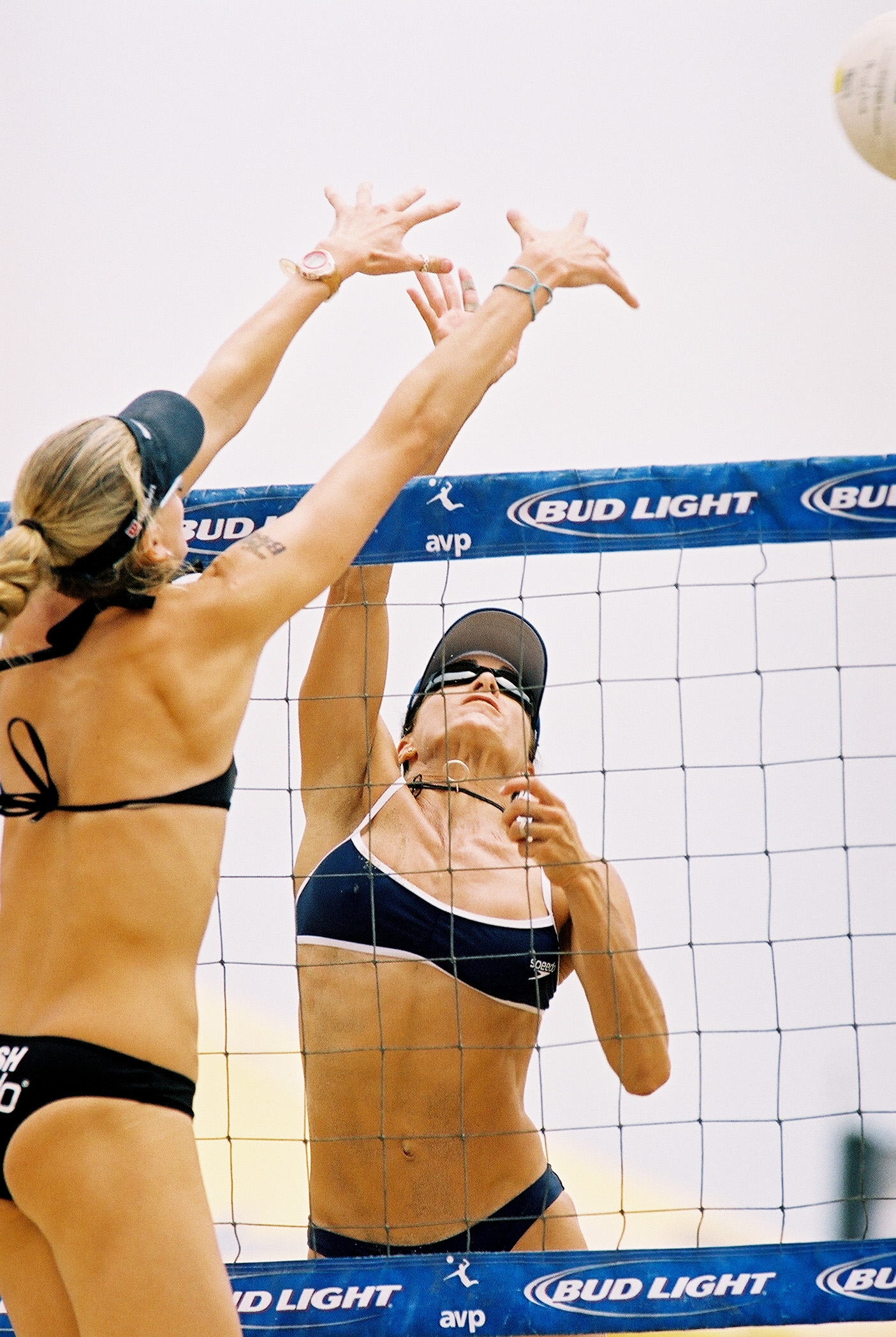
McPeak, as she always does, regrouped. She found a new partner, Elaine Youngs, and together they qualified for the Brazil Olympics. McPeak finally arrived at the Games with a fully intact team. She was 36 by that time, but her game was never dependent on her elite athleticism. It was about her elite grit. They lost to May and Walsh in the semifinals but rebounded to beat an Australian team to win a bronze medal.
“Being on the podium in 2004 was incredible, because of all that heartbreak, to finally get there,” McPeak said. “I’m like, ‘Are you kidding me? I need to get up there.’ So that was pretty incredible, although it seemed like it was about 30 seconds long. It was just a blur.”
Hers was an unfathomably long road to the top of the mountain, but for McPeak, it was somehow appropriate. She never wanted it to be easy.
“I mean, in my journey, there’s a lot of pain, and some dips in the road, challenges, obstacles, actually a lot of them,” McPeak told Sandcast. “But this day, I wouldn’t change anything. I learned so much. I feel like I can survive anything. You talk about grit and perseverance – those are skills that you’re not taught. People can’t say, ‘Here’s grit.’ You can’t do that. You earn it. You earn it by being in tough situations.”
See SandCastVolleyball.com for the full Holly McPeak interview. ER



